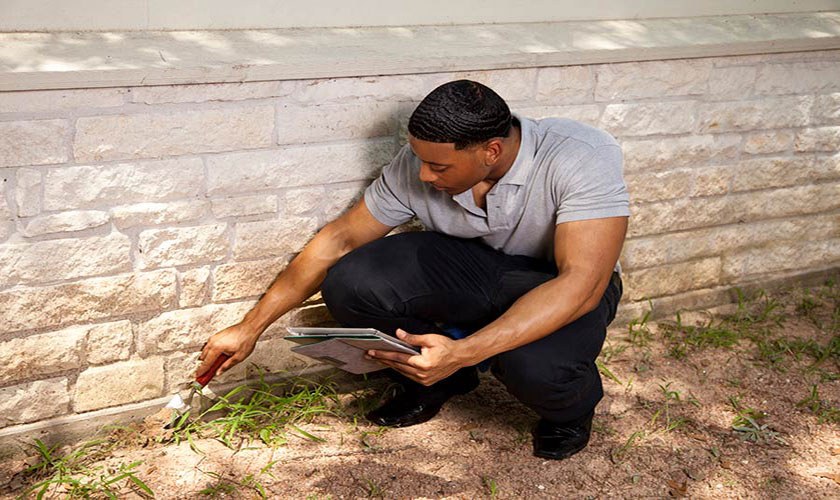If you are a homeowner, you know those home inspections are crucial in the buying process. A home inspection report provides an in-depth look at the condition of a property and can help buyers or sellers make informed decisions about what to do next.
What to Expect from a Home Inspection Report?
A professional home inspector provides an inspection report after completing a home inspection. An inspection report should include the following:
- A typed list of visible deficiencies and safety hazards
- Photos to identify locations of defects and safety issues
- A summary that highlights the most critical concerns
- Inspection reports delivery by email is most common, usually as a PDF document

What Does a Home Inspection Report Include?
A house inspection report should include information on the following items:
Roof
- the roof-covering materials
- the gutters and downspouts
- the vents, flashing, skylights, chimney, and other roof penetrations
- the general structure of the roof from the readily accessible panels, doors, or stairs
Exterior
- the exterior wall-covering materials
- the eaves, soffits, and fascia
- a representative number of windows
- all exterior doors
- flashing and trim
- adjacent walkways and driveways
- stairs, steps, stoops, stairways, and ramps
- porches, patios, decks, balconies, and carports
- railings, guards, and handrails
- vegetation, surface drainage, retaining walls, and grading of the property where they may adversely affect the structure due to moisture intrusion
Basement, Foundation, Crawlspace & Structure
- the foundation
- the basement
- the crawl space
- structural components
Heating & Cooling
- the heating and cooling systems, using normal operating controls
Plumbing
- the main water supply shut-off valve
- the main fuel supply shut-off valve
- the water heating equipment, including the energy source, venting connections, temperature/pressure-relief (TPR) valves, Watts 210 valves, and seismic bracing
- interior water supply, including all fixtures and faucets, by running the water
- all toilets for proper operation by flushing
- all sinks, tubs, and showers for functional drainage
- the drain, waste, and vent system
- drainage sump pumps with accessible floats
Electrical
- the service drop
- the overhead service conductors and attachment point
- the service head, gooseneck, and drip loops
- the service mast, service conduit, and raceway
- the electric meter and base
- service-entrance conductors
- the main service disconnect
- panelboards and over-current protection devices (circuit breakers and fuses)
- service grounding and bonding
- a representative number of switches, lighting fixtures, and receptacles, including outlets, observed and deemed to be arc-fault circuit interrupters (AFCI)-protected using the AFCI test button, where possible
- all ground-fault circuit interrupter receptacles and circuit breakers observed and deemed to be GFCIs using a GFCI tester, where possible
- for the presence of smoke and carbon monoxide detectors
Fireplace
- readily accessible and visible portions of the fireplaces and chimneys
- lintels above the fireplace openings
- damper doors by opening and closing them, if readily accessible and manually operable
- cleanout doors and frames
Attic, Insulation & Ventilation
- insulation in unfinished spaces, including attics, crawl spaces, and foundation areas
- ventilation of unfinished spaces, including attics, crawlspace, and foundation areas
- mechanical exhaust systems in the kitchen, bathrooms, and laundry area
Doors, Windows & Interior
- a representative number of doors and windows by opening and closing them
- floors, walls, and ceilings
- stairs, steps, landings, stairways, and ramps
- railings, guards, and handrails
- garage doors and the operation of garage door openers using normal operating controls
A home inspection disclaimer with list inspection limitations, such as areas that are inaccessible at the time of inspection. Source: NACHI Standards of Practice
What does a Home Inspection Report Look Like?
There are many options for home inspection report writing software. Some only produce PDF documents, while some produce both HTML and PDF documents. While the information inside the inspection report is similar, the inspection report’s appearance can vary widely between inspectors.
Sample Home Inspection Report
Here is an actual home inspection report samples. While most reports will list deficiencies, most of these are minor issues. However, an expensive repair will often cost $1000 or more.

The Purpose of a Home Inspection Report
A home inspection can take 2-3 hours to complete. Although undergoing a full home inspection can be tedious, it is generally quite rewarding for the client if it is reasonably good. Perhaps other scenarios also warrant home inspections, such as newly built homes and realtors selling houses.
A home inspection report aims to educate the client about the home’s condition and systems.
Most homebuyers will make a purchase offer with a home inspection contingency but don’t completely comprehend the home inspection’s purpose. Due diligence aims to validate the information on the property disclosure. While many buyers negotiate repairs, that’s ultimately not the home inspection’s purpose.
The inspection report is only valid for the inspection day and does not guarantee future conditions, which can deter some people from having a home inspection. The perception is that there may not be much of a point without a guarantee to show for it.
Even if the property is selling “As Is” with no option for seller repairs, the inspection offers a clear understanding of the condition of the home and any major issues and safety hazards.
Many prospective buyers prefer having an inspection report to negotiate repairs. Still, they often don’t understand that the home inspector can only recommend repair by a qualified contractor. The inspection report doesn’t state who’s responsible for fixing it.
You can use the inspection report to negotiate repairs; however, no guarantee that repairs will happen.
For persons buying or selling homes, the details in the inspection report can impact the real estate transaction. There is no pass or fail with a home inspection. A bad home inspection process could result in a lost sale for realtors, while a good home inspection could place realtors in an advantageous position.
Such details would affect many factors, such as pricing and fees for potential home buyers. Sellers are legally bound to disclose known deficiencies to other prospective buyers.
Those who have a home inspection on their property before selling can identify areas that need repairs to maximize the selling price.
Understanding where the actual value of a home inspection report lies in its information. It is incredibly beneficial for recordkeeping and in-depth knowledge of the property.
Frequently Asked Questions
What is the purpose of an inspection report?
A home inspection report aims to help the buyer verify that the property disclosure information is accurate and identify any major problems before the sale is finalized. This way, they can negotiate repairs or credits as needed.
How long is a home inspection report valid?
Home inspection reports reflect observed conditions on the day of the home inspection. They are written in present-past tense and are not indicative of future needs. They are not a guarantee of future conditions or a warranty against things failing.
How to get a copy of a home inspection report?
If you want a copy of a previous home inspection report, you’ll need to ask the person who originally purchased the home inspection. The home inspector can’t share the inspection report without permission from the client that ordered the inspection.
The client will often share the inspection report with their agent and the listing agent if they seek repairs or credit as part of their seller negotiations. In this case, the agent may retain a copy of the report.
However, you should not use an old inspection report for due diligence. Since a home inspection is a point-in-time inspection, circumstances or conditions may have changed.
How to read a home inspection report?
When reading a home inspection report, understand that you should focus on safety issues and structural deficiencies. These are the most pertinent items that require immediate attention. Next, look at the condition and age of systems like roofing, electrical, plumbing, and HVAC.
Cosmetic items should not be your primary concern, and sellers are often not required to correct them unless they pose a safety concern.
How to respond to a home inspection report?
Reviewing your home inspection report with your real estate agent is best. State laws vary, so you should discuss the findings with a knowledgeable agent who understands state real estate laws. They can guide you in filtering home inspection results and determining what should be renegotiated. Not all inspection findings warrant renegotiating with the seller.
Remember, in its simplest form, the home inspection’s purpose is to verify that the information provided by the seller’s disclosure is accurate and that no significant underlying structural defect or safety issues are present.
What are the most common problems found in home inspections?
Many problems can be found during a home inspection, but some are more common than others. Some of the most common problems include:
1. Foundation issues
2. Water damage
3. Mold and mildew
4. Pest infestations
5. Electrical problems
These are just some of the most common problems found during home inspections. If you have a home inspection, it’s important to be aware of these potential issues to be prepared for what the inspector may find.
If any problems are found during your inspection, fixing them as soon as possible is important. Ignoring these problems can further damage your home and cost you money in the long run. If you’re unsure how to fix the problem, ask your inspector for advice. They should be able to tell you what needs to be done to fix the problem.
Remember, a home inspection is a valuable tool that can help you identify potential problems with your home. By being aware of these common problems, you can better prepare for what the inspector may find.
What are the red flags in a home inspection?
Home inspection red flags can indicate more serious issues that must be addressed. Common red flags include foundation issues, water damage, electrical problems, and termite infestations.
Conclusion
Home inspection reports are essential for buyers and sellers and provide an in-depth look at the condition of a property. The inspection report may include photos of deficiencies, descriptions of problems, and repair recommendations.
Buyers should read their home inspection results carefully and ask questions about anything they do not understand. Sellers should prepare to address any issues found in the home inspection report. Often, necessary repairs will vary depending on your state’s real estate laws.







